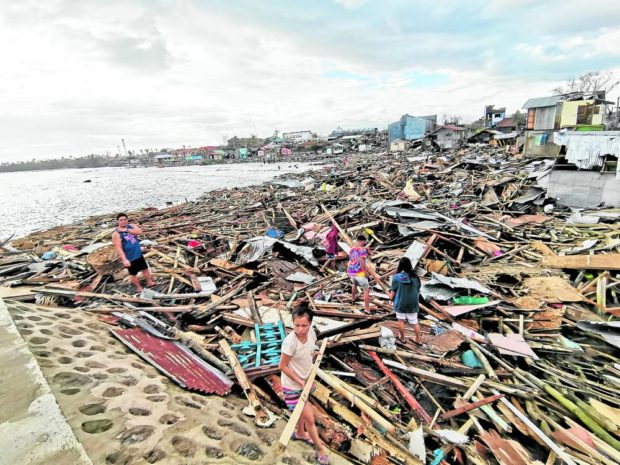
FILE PHOTO: Residents of Ubay, Bohol, dig through piles of debris to find anything they can use to rebuild their homes destroyed by Typhoon Odette (international name: Rai), as it battered the Visayas and Mindanao regions in mid-December 2021. Leo Udtohan
MANILA, Philippines—The onslaught of Typhoon “Odette” (international name: Rai) in the Philippines and Vietnam last month inflicted the fifth-biggest number of deaths among the world’s natural disasters in 2021, Aon PLC said.
In a Jan. 25 report, the global risk management, insurance and reinsurance brokerage services provider said “Odette” was “the deadliest tropical cyclone” last year.
Last Dec. 16, the typhoon’s 260 kilometer per hour (kph) maximum sustained winds at landfall was equivalent to a Category 5 hurricane or the most powerful and destructive level in the US, Aon noted.
“Its landfall in late December left 409 people dead in the Philippines and
another casualty in Vietnam,” Aon said.
“Odette” also left $1 billion in economic losses in the two countries it battered, Aon’s estimates showed. Aon said it was the Philippines’ third-costliest typhoon on record.
Amid climate change, “Odette” was the third Category 5-equivalent typhoon to hit the Philippines during the past two years, Aon said.
The deadliest natural calamity in 2021 was the strong August earthquake in Haiti, which killed 2,248 people and caused $1.6 billion in losses, Aon’s data showed.
From June to October of last year, seasonal floods in India resulted in 1,282 deaths, while the heatwave that swept western North America also in late June 2021 left 1,029 people dead.
In China, seasonal floods from June to September 2021 took the lives of 545 people.
A total of about 10,500 people died due to natural catastrophes last year, which also shed an estimated $343 billion from the global economy, Aon said.
Aon nonetheless said that “the number of annual human casualties has shown a notable decline in recent decades.”
“The improvements in forecasting, evacuation planning/strategies, increased public awareness and better building practices have all played a key role. Asia, Africa, and South America show the greatest improvements with reduced fatalities,” it said.